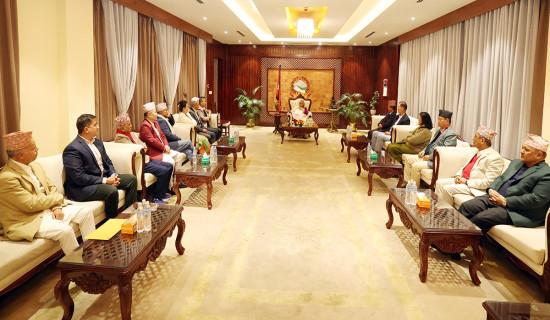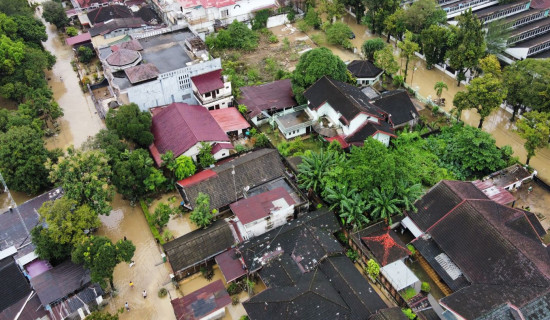- Sunday, 30 November 2025
Decade Of AI Hype And Humanity
In the last ten years, artificial intelligence (AI) has morphed from a science fiction topic into a significant part of our day-to-day reality. What was once the realm of academic research labs and science fiction has quietly but significantly seeped into everyday life. AI today is not just a product of our imagination; it recommends entertainment, organises our schedules, improves our healthcare, and even helps predict natural disasters in at-risk communities.
A decade ago, AI would have conjured images of robots and evoked films like The Matrix. The story is very different now: it is less visible yet ubiquitous, working in the background to smooth our daily routines and solve complex problems. AI assistants help manage our day, from wake-up to bedtime, with calendars, reminders, and to-do lists. Meanwhile, sophisticated AI algorithms trained on our interests determine the entertainment we consume, the products we shop for, and even the news we read. For instance, Netflix employs machine learning models to suggest shows and movies based on our watch history and navigation patterns. The change has been so slow that countless of us hardly even realize it.
Early stages
The early 2010s were when AI was experimental. Apple released Siri in 2010, one of the first mainstream AI applications that everyday consumers could personally engage with. AI was still in the early stages, with basic rule-based systems that were also limited in their learning capabilities. The early versions of tools, such as Google Translate, provided helpful but often clunky translations and strides in facial recognition that were starting to make their way into our smartphones.
At the same time, public comprehension of AI was limited during this period. The development landscape shifted as big tech companies started open-sourcing their machine-learning software. In 2016, Google open-sourced TensorFlow. Microsoft followed with CNTK, Baidu with PaddlePaddle, and many other frameworks to make AI development tools more widely available.
Between 2016 and 2022, machine learning and deep learning unlocked a ton of what AI could do. By harnessing large data sets and computing power, AI systems have evolved to become more adaptive and predictive, widening the scope of their applications across industries. This era also saw the use of AI by doctors to diagnose diseases, predict weather patterns, filter spam, and even drive cars. AI is transforming how engineers analyse environmental data to model floods and droughts. AI is also being utilised in digital health to create responsive web platforms that target different users, ranging from able-bodied individuals to those with disabilities. At this time, general interest and awareness of AI skyrocketed.
Generative AI has newly redefined us in the context of artificial intelligence. OpenAI launched ChatGPT in late 2022, bringing sophisticated language models into the popular consciousness. Suddenly, AI could write essays, design logos, create music, and even write code—tasks once reserved for human creativity. Early adopters of generative AI are already reporting saving around 11 hours per week for content marketing tasks. Research suggests that generative AI has the potential to boost writers’ creativity by as much as 26 per cent. We are now co-writing our code with AI and working together with AI.
As AI advances, we must reckon with what it portends. With less oversight, AI systems can reinforce existing biases and widen social divides. Research has found some concerning examples: AI algorithms reject up to 80 per cent of mortgage applications from families of colour in the US housing market; the welfare system falsely accuses vulnerable people of cheating in Australia; and AI assessments downgrade results for 39 per cent of students attending disadvantaged schools in the UK.
Countries such as Nepal will risk falling behind if they do not invest in human development in AI research, education, and regulation. Such a technological divide reflects existing social disparity. We must ask: Who builds AI? Who benefits from it? And who is excluded? Nepal’s journey toward AI adoption could be a vibrant blessing or a cautionary tale of technological dependency. Nepal’s AI policy and education reforms show awareness, but weak action may leave the country behind. Most AI systems are trained on predominantly Western datasets. This results in a double whammy for Nepal.
First, there is a cultural mismatch: Global AI tools such as ChatGPT don’t relate to Nepal’s linguistic diversity—Nepali, Maithili, and Newari—and don’t address hyperlocal needs. Second, data poverty: In the absence of robust local datasets, Nepal’s development of AI will rely on foreign data architectures. It calls for “Nepali-centric AI.” The National AI Policy 2081 (2025) identifies this need. It does not, however, have firm plans for establishing high-performance computing (HPC) infrastructure or publishing open datasets for local languages and use cases. Significant challenges are the curriculum gap and brain drain. Talented professionals escape abroad, and local industries are not motivated to implement AI-based solutions.
Initiatives
Initiatives like the Omdena-NIC partnership aim to bridge this gap through affordable online courses and real-world projects. Nepal needs to prioritise localised foundation models and regulatory commitments. It must train large Nepali language models (LLMs) on relevant indigenous languages and cultural contexts and collaborate with community organisations. Elsewhere, it needs to enact and implement strong data localisation laws and erect ethical roadblocks for AI in public services.
The next decade of AI development will see wiser algorithms and wiser use of them. By harnessing young talent, expanding internet access, and adopting open-source software, Nepal and other developing countries can overcome technological hurdles. The future of AI will not belong to the code whisperers but to the world makers, the world givers, and the world lovers. The next era of artificial intelligence needs to be fundamentally and authentically human.
(Upadhaya is a software engineer at American Specialty Health Inc. and Dahal is an AI researcher in civil engineering.)
















